
|
MFC Year II Project |
|
Usage of Microbial Fuel Cell Technology in Landfills. Year II. Enhanced Organic Compound Decomposition and Nitrogen Removal |
|
Sponsored by the Hinkley Center for Solid and Hazardous Waste Management. Duration: September, 2011 to August, 2012. |
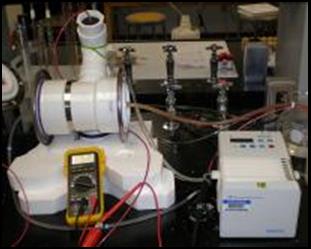
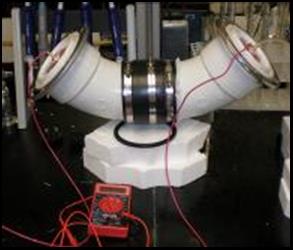
|
Objective: Low cost, low maintenance and energy-generating onsite systems for the treatment of landfill leachate with high ammonium content are in urgent need, especially for landfills located in low population areas where landfills are smaller and often at a distance from sewage systems and lack trained personnel. The purpose of this study is to design and test two continuous microbial fuel cell (MFC) reactors, i.e., an ammonium oxidation/MFC reactor and a MFC/Anammox reactor for power generation as well as organic compound decomposition and nitrogen removal from landfill leachate. Specific objectives of this research include: · Landfill leachate collected from landfills located in Northwest Florida will be treated in a laboratory scale continuous ammonium oxidation/MFC reactor, which is composed of an in-line nitrification column and a MFC reactor. Impact factors such as the organic load, retention time, pH, and alkalinity as well as nitrification reaction time will be investigated. · Landfill leachate collected from landfills located in Northwest Florida will be treated in a laboratory scale continuous MFC/Anammox reactor. Besides factors impacting organic removal such as the organic load and retention time, factors that may impact the nitrite accumulation in the Anammox reaction such as the dissolved oxygen concentration and alkalinity will be explored. The MFC/Anammox reactor will be compared with the ammonium oxidation/MFC reactor in terms of power generation as well as organic compound decomposition and nitrogen removal.
Rationale: MFCs are an emerging technology that converts the energy contained in organic matter directly to useful electrical power. The main applications envisaged for MFCs at present are as a cost-effective technology for the treatment of wastewater with high organic and nitrogen contents. Combined carbon and nitrogen removal in a MFC with biological anodes and cathodes can lead to a more energy-efficient wastewater treatment. For the combined process, organic oxidation occurs in the anodic chamber with the released electrons being transferred and consumed in the cathodic chamber by nitrate or nitrite. At the same time, power can be generated. To achieve nitrogen removal, ammonium is either oxidized to nitrate in a separate process or partially oxidized to nitrite in the cathodic chamber. The effluent from the anodic chamber is introduced to the cathodic chamber through a loop. With so called “loop operated” MFCs, the acidity produced in the anodic chamber can partially offset the alkalinity produced by nitrate or nitrite reduction. Using the proposed MCF technology, combined organic and nitrogen removal can be achieved simultaneously for landfill leachate with high organic and nitrogen contents. This technology has potential markets for small landfills that serve low population areas and landfills that are at a distance from sewage systems.
|
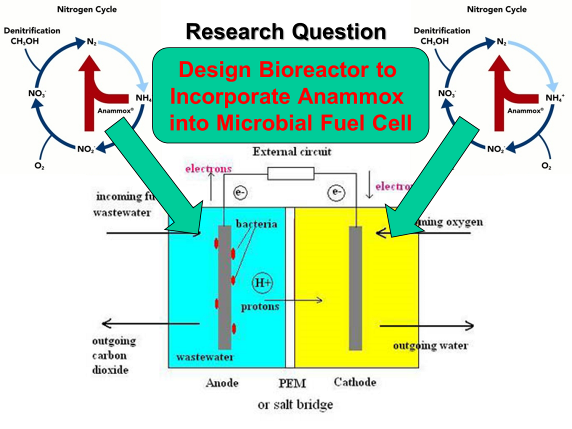
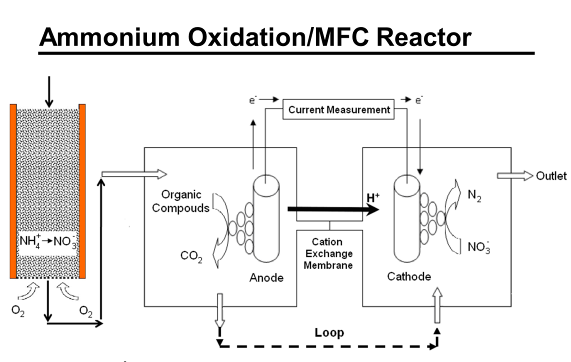
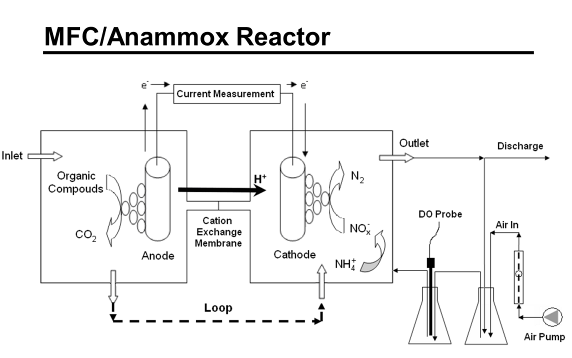

|
Timeline of Milestones
|
|
Gang Chen, Ph.D., P.E. |
|
Professor |